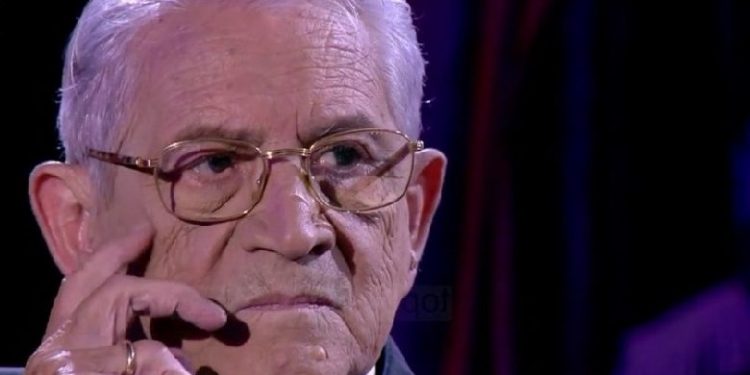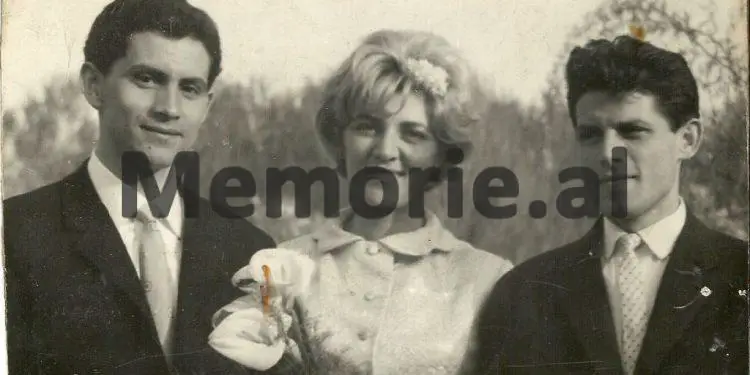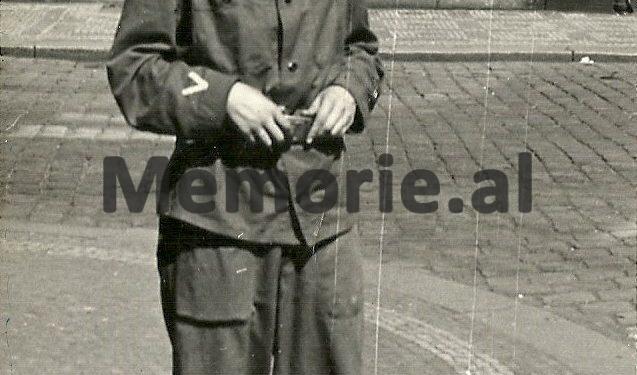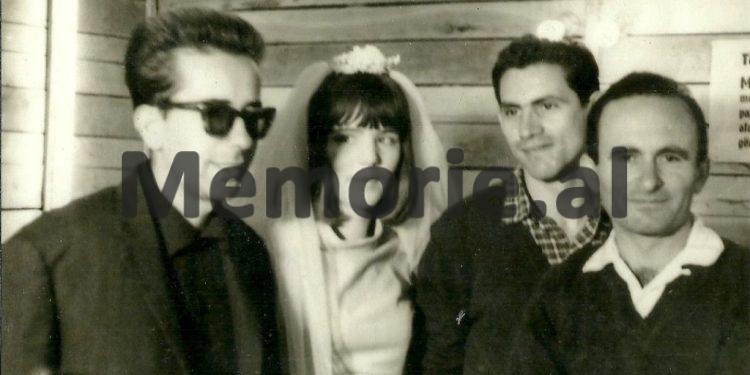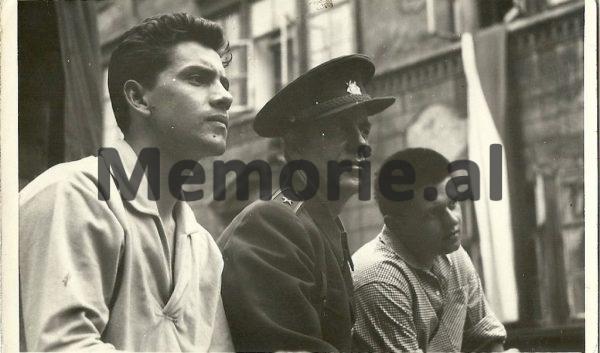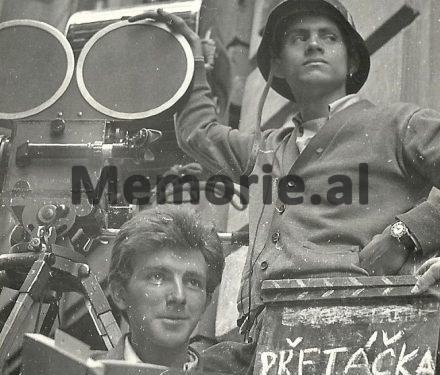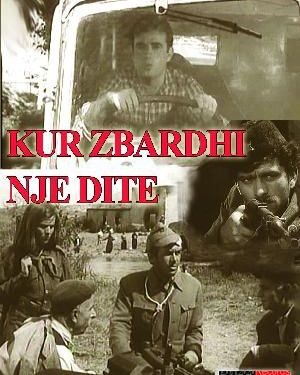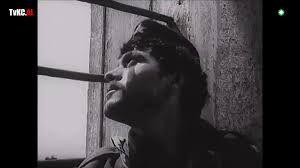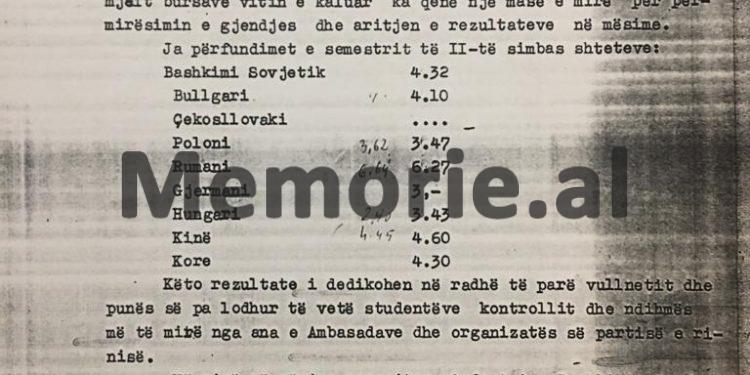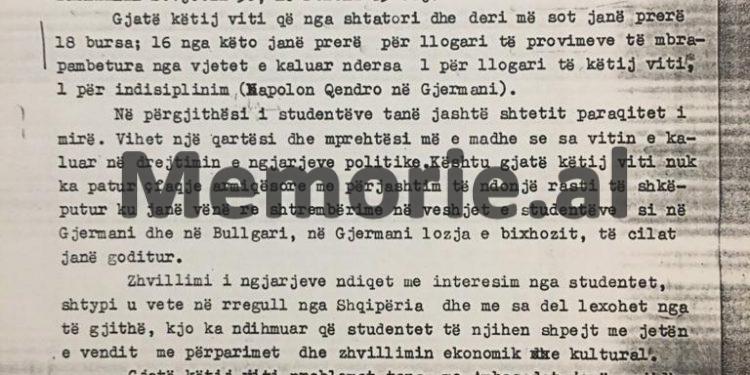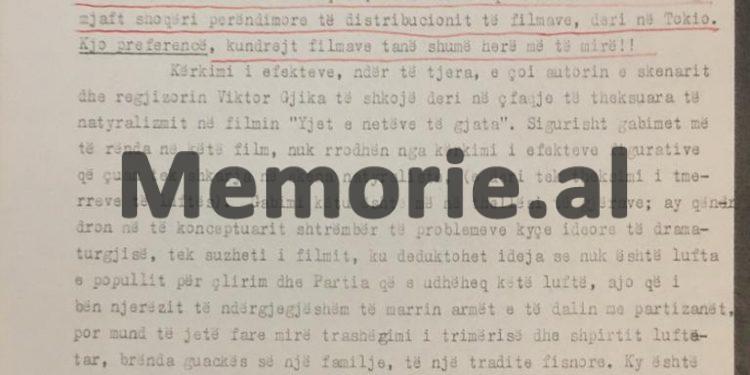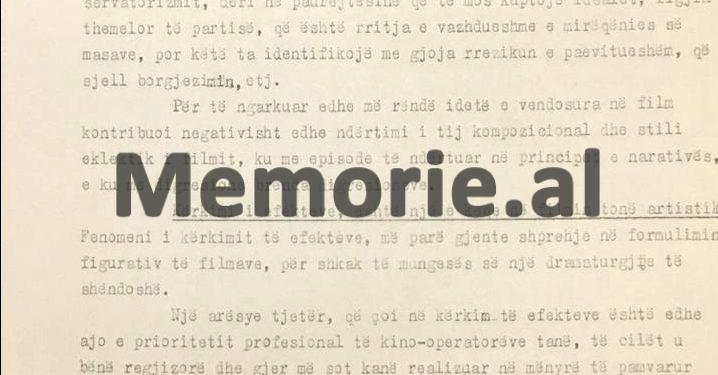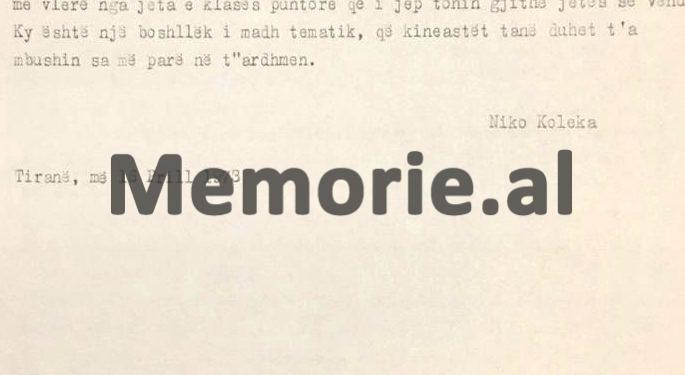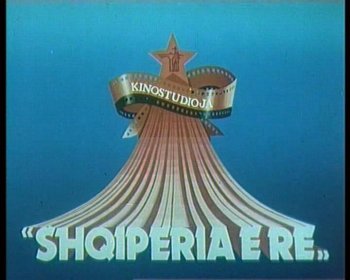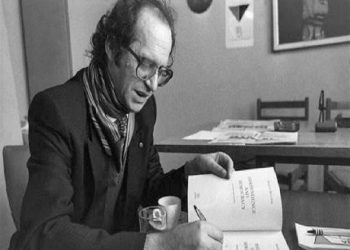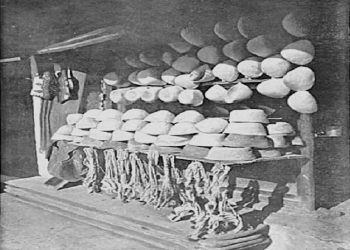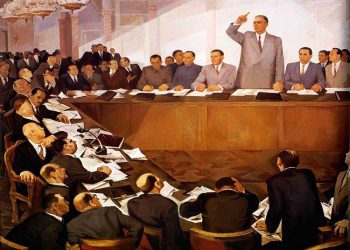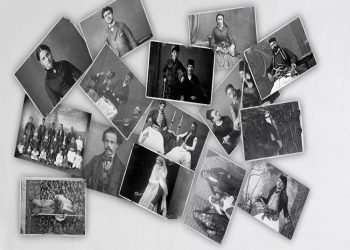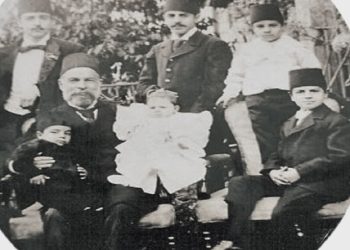Dashnor Kaloçi
Memorie.al /publishes the unknown story of some of the most famous Albanian films of the ’60s-’70s, such as: “Why does this drum fall”, “Prita”, “Kapedani”, “Stars of the long nights “,” When a day dawned “,” Consciousness “, etc., who were subjected to strong censorship and had major problems both in the process of realism and later when they appeared although very successfully in Albanian cinemas . Information report of the former deputy director of Kinostudio “Shqipëria e Re”, Niko Koleka in the middle of April 1973 for the Central Committee of the ALP, where he analyzed and released “all the sticks” of some of Albanian films made in those years, by: Hysen Hakani, Piro Milkani, Viktor Gjika, etc., regarding the “slips” that they had in their works. For example, Milkani, in Kinonovela, “Meçua” of the movie “When a day dawned”, puts the hero partisan, Meçon, to fight in the bell tower of a completely single monastery, where the partisan surrounded by enemy fire climbs up to defend itself under the bell and cross of the monastery. And it was the quest to give this whole scene a powerful effect that prompted the authors to seek out the sunlight to break over the cross and form a glor. As a result, we saw how this figurative effect gave us a very mystical idea. From consequence to consequence … It may seem unbelievable but it is a fact. The movie “Mechua” is the movie that is most in demand by many western film distribution companies, up to Tokyo. This preference, towards our films many times better …”?!
As in all Eastern European countries, the communist regime in Albania before the 1990s took care to support and give a top priority to the country’s cultural and artistic institutions, through them and the media. massive, such as the Albanian Radio-Television and Kinostudio “Shqipëria e Re”, with which he learned the official propaganda and the “political line of the Party”. This was evident not only from the great weight that those two institutions held until the end of the ’90s, (remember “Kinostudio with 14 feature films per year, or RTSH with a considerable number of shows), in the spread of the propaganda of that regime, but also of the very “glorious” constructions of the respective buildings, which although with the model of Soviet and Chinese architecture that they were built, even today stand out with their grandeur. Given the fact that writers and artists were considered by the communist regime in power as “helpers of the Party”, through their works, mainly literary and cinematographic, tried to convey its propaganda. But in both literary and cinematographic works, there was a considerable “handicap”, as writers and directors who had studied in the countries of the Communist East until 1961, could not detach themselves in their creativity, from the spirit of which they were inspired by in the places where they had studied. For example, in the former Soviet Union, Poland, Czechoslovakia, and elsewhere, where Khrushchev’s liberal policies or tendencies toward openness to the West from the mid-1950s onwards had borne fruit. having a significant impact on the Albanian students who had studied in those countries. Although official Tirana had tried with all its might to “immunize” Albanian students from “infection” by “Western foreign ideology”, through a strict control of them by the State Security people who acted camouflaged or no, in our embassies abroad, he could not fully achieve the goal. Thus, in many reports and information sent by the Albanian embassies in some of these places to the address of the Ministry of Foreign Affairs in Tirana and the Central Committee of the ALP, were given in detail everything that happened to the Albanian students who were in those places. For example, for Pirro Milkani and Mihallaq Luarasi, where, among other things, it was said that: “They propagate the life of pleasure that takes place in Western countries”.
Which, as we said above, also influenced their creativity, to many writers and artists, such as Kadare, Mihallaq Luarasi, Kujtim Spahivogli, Lluk Kaçaj, Stavri Rafaeli, Xenophon Dilo, Danish Jukniu, Thanas Papa , Fadil Kokomani, Vangjel Lezho, Trifon Xhagjika, Dhimitër Anagnosti, etc., where some of them ended up in prisons and internments of the communist regime for years or were shot. But even those who escaped these punishments, throughout their creativity were under the strict surveillance of the censorship mechanisms exercised by that regime. Which also appears in this document published by Memorie.al, which is a report-information of 1973 addressed to the Central Committee of the ALP by the deputy director of Kinostudio “Shqipëria e re”, at that time, Niko Koleka, where he makes a very detailed analysis of the work in that very important propaganda institution of that time. In his report-information on “Issues of content in cinematography”, Koleka analyzes all the feature films that Kinostudio had produced in those last years (late ’60s and early’ 70s), giving a “deconstructive” panorama to their content. Among the films he takes into analysis is “Why does this drum fall” starring two well-known filmmakers, painter Xenophon Dilo (screenwriter) and Pirro Milkani, as director, a film based on the novel “Wedding” By the writer Ismail Kadare. After this film, he “whips” some other films, such as “Montatorja”, “Prita”, “Kapedani”, “Consciousness”, “Stars of the long nights”, to end with “When a day dawned”, of Milkan, where in Kinonovela “Meçua”, the director had “slipped”, which had made that film sought after by many film companies of western distribution, even to Tokyo! But for more about this and other films of that time who had many problems and were “whipped” by the deputy director of that institution, Niko Koleka, we know this document that we are publishing from the relevant files in the Central State Archive, at the fund of the former Central Committee of the ALP.
Niko Kolekë’s report for the Central Committee of the ALP
Content: INFORMATION OF THE MINISTRY OF EDUCATION AND CULTURE AND THE CINEMA STUDIO “ALBANIA E RE” ADDRESSED TO THE CENTRAL COMMITTEE OF ALP:
ISSUES OF CONTENT IN CINEMATOGRAPHY CREATIVITY
Our films are generally deeply permeated by the spirit of partisanship and militate for party ideas, reflecting and correctly interpreting the great political and revolutionary upheavals that followed since the establishment of the Albanian Communist Party, during the popular revolution, and throughout the course of further revolutionization. of life, for the socialist construction of the country. Here we have in mind the best achievements, the successful realizations they have given to the cinematic art. Such films can be counted as “Debate”, “The first years”, “Commissar of Light”, “Victory over death”, “Silent duel”, “The eighth in Bronze”.
In these works, the conflict of great matches, between us and our enemies, is presented rightly, and the dramaturgical construction has gone into the in-depth search for life divergences, derived from ideology, from the principle of class struggle, rightly establishing antagonistic contradictions and made armed warfare and vigilance, principled solution and weapons of revolutionary practice. At the center of the matches, the dramaturgical subject has put the popular masses, or their worthy representatives, discovering and giving us with a rich spiritual world their ideals in the struggle for liberation, the spirit of selflessness and sacrifice, their aspirations for a new world, both to the hero – massive and to the hero – character. The enemies, the antagonists have given in all their savagery and cunning as bearers of evil, charged with anti-popular danger, without caricaturing them, but also without making any fetishism, of their military potential. The popular war and the belief in victory, is given with strong ideo-emotional motives.
Perhaps also for the fact that it inherited nothing from the past, but the foundation for the merit that was created and developed under the auspices of the Party and was inspired by its immortal teachings and magnificent work, our cinematography crystallized its features into pure and strong national. The language of the film, the means of expression, gave the life of the popular masses and heroes on the real Albanian floor; this is evident from the way they think and act, from the richness of the inner spiritual world to the deeply popular character, surrounded by the environment where they convey as rich warriors, and where they influence education in the spirit of everything precious of the past tradition, contrary to the denial of what the party stigmatized as negative since the National Liberation War.
The film “Why does this drum fall”, according to the novel “Wedding” by Ismail Kadare, was the first to bring concerns and confirmed a slip from the good tradition created in cinematography. The authors of the film, screenwriter Xenophon Dilo and director Pirro Milkani, starting from the concept to make an almost complete transplant of the composition of the novel, in the film, tried to give two worlds, the patriarchal-conservative world, in gradual decomposition to collapse and the new world that consolidates in the bosom of the working class, that comes to life in the new city, in the great actions, in the changes they bring to consciousness, in the spiritual world of the people, the teachings of the party, (and the new technique which breaks the habits of old).
The attempt to provide all these ideas and motives with a modern conception and modernist style, tended to deepen a series of issues that diluted the vitality of the village, as well as the connections of the city with it. Here, it was passed on to a complete ignorance of the alliance of the working class with the working peasantry. The village life was darkened, and the good intention to stigmatize the remnants of the remnants of patriarchy and conservatism, went into distortion, underlining a savagery of the highlanders by revoking the barbaric habits of bloodshed and misery, which belonged to the past, that is, out of time, and that the performers gave it with a wrong concept making them effective exotic ode. Instead of condemning the concepts, the patriarchal customs were humiliatingly emphasized to the people who carry them.
Likewise, a very vague appearance gave the film in the collective life of the working class. In the direct influence of the theories made these last two decades in world cinematography, where there is a stagnation of trends, currents, styles, our filmmakers who have a great passion to create valuable works, to say each one “a word” to contribute to the development of our cinematic art, and always driven by this lofty goal, are not immune from this constant pressure that radiates to them through the many films they watch and the foreign professional literature they regularly use . Today, in the cinematography of many countries, intellectual or non-communication cinematography is developing with a detrimental effect, but with the demagogic slogan “in search of the most progressive”. In this current, many reactionary currents find rest, as in a large pier, from surrealism to existentialism, not to mention some of the most discredited and unmasked derivatives even in the eyes of Western critics, apparently also for incompetence. of pseudo artists launching them, or some films with revisionist ideologies.
The serious flaws of the film “Traces” come from the intellectual conception to make such a film without being preoccupied with the necessity of being an understandable communicator for the masses. (What appears today in cinemas or on Television is not the conscious work of its authors but the result of a critical collegial intervention that forced the authors to film the first version some very important corrections without which the film would be unacceptable and invisible to us). Lured by the idea of imposing opinion and criticism on a great film, where thought must be sought somewhere deep, implied, the authors managed to conceive a subject where to concentrate almost all the great events that gave further impetus to the revolution. of our lives, from the Open Letter of the Party until 1969. Although starting from the good intention in the film, there was no way the authors could not fall into an increase of problems and phenomena both outside time and abroad.
The working class, in some episodes, presented itself brutally, opposing the intelligence which in the film was often not given to the opinion of the time, but out of time. In the dramatic line, the film tended to take place abroad, as it did not consider the ethical principles of mentality and norms and made the hero killed, almost a whole trial in his house, where praise was said but more “in this presence of death” which was cynically underlined by the dialogue, numerous criticisms were said about the hero. Another tendency: To raise the problem of the non-existence of “fathers and sons” by creating a distorted image of the generation that waged the National Liberation War, which burdened it with a heavy burden of conservatism, to the point of not understanding the ideals, the basic law of the Party, which is the continuous increase of the welfare of the masses, but to identify this with the supposedly inevitable danger that the bourgeoisie brings, etc. To load even more heavily the ideas set in the film also contributed negatively to its compositional construction and eclectic style of the film, where with episodes built on the principles of narrative, and where with digressions within digressions. Seeking effects is a bad thing in our feature film. The effect-seeking phenomenon previously found expression in the figurative formulation of films due to the lack of a sound dramaturgy.
Another reason that led to the search for effects is that of the professional priority of our cinematographers who, became directors and to date have independently made 2-3 films each as: Dhimitër Anagnosti, Pirro Milkani, Viktor Gjika etc. In addition to the dramaturgically wrong conception, the tendencies for the effects of their directors in the novel “Meçua” of the film “When a day dawned” by director Pirro Milkani, in the film “Stars of long nights” with director Viktor Gjika. It is clear that from the search for effects on a dramaturgical basis one goes to a complete and conscious ideo-emotional harmonization of the work with all the components.
In fact, this was proven in the movies we mentioned above. In the novel “Meçua” placing the hero partisan, Meçon fights in the bell tower of a completely single monastery, the partisan surrounded by enemy fire that climbs to the top to defend himself under the bell and the cross of the monastery. And it was the quest to give this whole scene a powerful effect that prompted the authors to seek out the sunlight to break over the cross and form a glor. As a result, we saw how this figurative effect gave us a very mystical idea. From consequence to consequence … It may seem unbelievable but it is a fact. The movie “Mechua” is the movie that is most in demand by many western film distribution companies, up to Tokyo. This preference, towards our movies many times better?! The search for effects, among other things, pushes the screenwriter and director Viktor Gjika to go to prominent performances of naturalism in the film “Stars of the long nights”.
Certainly, the serious mistakes in this film did not flow from the search for the figurative effects that led to slipping into naturalistic scenes to the emphasis on the horrors of war. The mistake here is in the depths of things, it lies in the distorted conception of key ideological problems of dramaturgy, in the film’s screen where the idea is deduced that it is not the people’s struggle for liberation from the Party that leads this war, what makes people conscious to take up arms and go out with the partisans. But it may well be the legacy of bravery and fighting spirit within the shell of a family of a tribal tradition. This is a shallow and naive treatment of social phenomena a misinterpretation of objective reality.
Throughout the film, the influence of a mother’s stoic resistance to her sons (Mother Pashako) is “typified”, who will also take revenge for the first son who is killed, so she goes to the mountains and the others and still lives away from the people. away from the troubles of the village and the war that its fellow villagers make. The development of feature film in our country is proving to us that dramaturgy in most cases is in the hands of directors as they are writing most of the screenplays that are realized. In other cases, as well, their role as directors justifies their right to manipulate the scripts of other authors. From this has resulted a closure in a close circle of authors and well-known forces of screenwriters, writers, very few become active. Among our feature films we can count some cases of an unfair manipulation of the scripts of other authors that the directors have inflated their glasses, beyond the possibilities appearing in the schematic concept as in the film “Prita”, “Montatorja” and in some other.
In the efforts to activate the new directors, the cause has been left for the realization of films like “Kapedani” or “Odyssey of the Fans”, which for the dramaturgical and directing weaknesses go as far as finding means of expression outside our social reality. These snippets or episodes that their directors introduce into films in the name of comic hyperbole, are direct intimacy from foreign films. Although in the script of the film “Captain” was clearly understood the tendency to whip the village conservative, Uncle Sulon, who was taken as the prototype of the fanatic, the backward man that the youth unjustly mocks, still the script was realized with this concept. “What you sow you will reap.” In fact, the film gave us Uncle Sulon, the patriot, partisan, who waged the National Liberation War and who holds the decorations on his chest that even the president of the cooperative in a night of danger from floods with a bag appoints a guard at the chicken coop.
The causes of weaknesses in our feature films come mainly from the insufficient ideo-aesthetic formation we mentioned above but also from the deep ignorance of the life of the people from the non-discovery of the contradictions of the time. The film “Consciousness” with screenwriter and director Hysen Hakani, which was awaited with interest as a film with a theme from the life of our working class, was a disillusionment. Rightly, the critics in the press pointed out the causes of the weaknesses of this film from a dramaturgy that gave the contradictions of the time with some pop episodes or because it “had” drama with a formalist and schematic conception. Although efforts are made to look for the theme of the working class, which is a big deficit in stage dramaturgy, to date we have not managed to give in our feature films, anything of value from the life of the working class that gives tone to all life of the country. This is a big thematic gap that our filmmakers should fill as soon as possible in the future./Memorie.al
Niko Koleka
Tirana, April 16, 1973
(Central State Archive, Ap. Central Committee of the ALP, (Structure), File 303, Year 1973, pp. 1-7)




